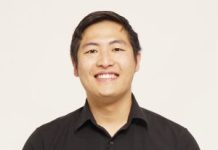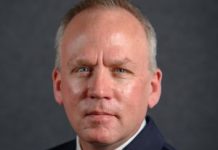Daniel Burrus Podcast Transcript
Daniel Burrus joins host Brian Thomas on The Digital Executive Podcast.
Brian Thomas: Welcome to Coruzant Technologies, Home of The Digital Executive Podcast.
Do you work in emerging tech, working on something innovative? Maybe an entrepreneur? Apply to be a guest at www.coruzant.com/brand.
Welcome to The Digital Executive. Today’s guest is Daniel Burrus. Daniel Burrus is a globally recognized futurist, keynote speaker, business strategist, and AI expert who helps leaders anticipate disruption and create exponential opportunities.
As a strategic advisor and consultant to Fortune 500 companies, he has guided executives in developing future ready strategies that drive innovation, growth, and transformation. The author of seven books, including The New York Times and Wall Street Journal bestseller, flash Foresight. Bur is known for pioneering the concept of hard trends and the anticipatory organization frameworks that empower organizations to predict change before it happens and act with confidence as one of the world’s leading technology futurists.
Burrus has delivered thousands of keynotes across six continents, helping audiences understand how to leverage emerging technologies such as artificial intelligence. Data analytics and digital platforms to gain a sustainable advantage in a rapidly changing world. Well, good afternoon, Daniel. Welcome to the show.
Daniel Burrus: Hey, thanks for having me on.
Brian Thomas: Absolutely, my friend. I appreciate it. You’re in San Diego today. I know you travel quite a bit. You’re a world-renowned futurist, AI innovator. Uh, I’m in Kansas City, so I appreciate you making. The time traversing two time zones today. But Daniel, if you don’t mind, I’m gonna jump right into your first question.
One of your signature frameworks is the distinction between hard trends, what will happen, and soft trends, what might happen in practice. How do you help organizations train their teams to identify hard trends reliably, especially when so much of the future feels uncertain.
Daniel Burrus: Well, that’s a, that word uncertain.
I think we have more uncertainty today than ever before. And the key is if you can find things you can be certain about, you have the confidence to make a bold move. And what I’ve done over the years has been able to take all trends and separate them into one of two columns that are a hard trend based on a future fact that will happen.
Or there is a soft trend based on an assumption that may or may not happen. And then a quick example and then I’ll give you the answer to your question. And that is, uh, for example, we went from 3G wireless to 4G of wireless to 5G wireless. Is that it? No, actually next will be six G followed by seven and there are seven, uh, 10,000 baby boomers in the United States turning 70 every day.
Will they chronologically get younger? No. Hard trend, they’ll get older. I’m just giving you a couple of quick examples. So what I do to help clients separate. The hard trend future facts from the soft trends ifs and maybes is I have first of all, a learning system called Anticipatory Organization Transformation.
Accelerators being used by hundreds of organizations around the world. They use that as well as my anticipatory leader system. And I give you another quick example. On Monday I had a Zoom where I had a thousand attendees. I taught them for an hour how to separate the hire from the soft. Then we broke into 68.
Uh, rooms, virtual rooms with 15 facilitators that I had trained to help them identify the hard trends and the opportunities, the soft trends and the opportunities to influence them. So I have many ways to do it with trained facilitators and of course, uh, seven books, uh, about the subject.
Brian Thomas: That’s awesome.
I appreciate that. And it certainly, certainly gives people a lot of anxiety, and I like how you’ve teased apart the, you know, the hard trends versus the soft trends. Which, uh, reduces the anxiety and the hard trends, uh, space. I really like that. And the anticipatory organization model. We’re gonna, that’s a segue right into my next question.
You distinguish between everyday innovation, continuous incremental improvements, right? And exponential innovation, which is game changing leap. As part of this anticipatory organization model, how should leaders be?
Daniel Burrus: Yes, and
Brian Thomas: okay.
Daniel Burrus: And there’s a, first, there’s a reason I didn’t call it the reactionary organization.
I think we’ve got that down. So, this is looking at the other part, how can we not just be agile, which is reacting quickly, but how can we anticipate problems before they happen so that we can presolve them? And by the way. That’s a key to everyday innovation. I mean, all of us have said at one point, well, I knew that would happen, and I would say, then why did you let it?
And the reason we did is, well, we weren’t a hundred percent sure, but what if we were. And I’ve done a survey of over a thousand CEOs recently asking them about their biggest problem. And the second question was, could you have seen it ahead of time and presolve it? 92%. Yes, they could. So that means that everyday innovation is empowering people in the organization.
If they see something they know is a problem that’s going to happen, they can presolve it, allowing everyone to move forward faster. The other type is exponential. Uh, innovation where you can take giant leaps ahead, and that’s where identifying the hard trend future facts, tying that to an opportunity and realizing that you can see disruptions before they disrupt, giving you the option of being the disruptor or the disrupted.
And by the way, there are hundreds and hundreds of hard trend, future back certainties that clients have identified and have taken action on. So, uh, again, the way to do the exponential is to look at what are those digital hard trends that are transformative and growing at an exponential rate. We know they’re happening.
They’re not gonna stop. They’re going to continue to accelerate. What are the opportunities for us? Whatever your company is, to take advantage of that and actually become. The disruptor, creating the transformations that need to happen to elevate relevancy and accelerate innovation and growth.
Brian Thomas: Thank you.
I appreciate that. Breaking that out. The anticipatory organizational model, I think that’s important. I like the stat you shared. You surveyed a thousand CEOs and 92% of them said they were able to presolve an issue or issues. Uh, I think that was interesting, of course. But I like, again, those hard trends, uh, especially the exponential hard trends that you do see, that explosive growth, that’s something you can use as a, a measurement to, uh, again.
Anticipate, uh, future trends and not be disrupted. So,
Daniel Burrus: Daniel, let me mention one thing real quickly, Brian, on that. Um, so there’s a problem with trends ’cause we know they’re there. Which ones will happen, which ones won’t. So I’ve solved that all trends fit into one of those two categories, hard or soft.
Second key thing here is a trend by itself is academic. Until you attach an opportunity to it. So my hope is even for this short interview is that you would ask yourself, is this a future fact? Is this trend going to happen? Or is it something that can be changed? And then secondly, don’t stop there. What is the opportunity?
Is this a soft trend? What’s the opportunity to influence it to be more positive? And if it’s a hard trend, you know it’s going to happen. What can we do to become the positive disruptor?
Brian Thomas: Thank you. I appreciate that. Love that, Daniel. Moving into the next question. Predicting trends is one thing. Ensuring your organization is aligned, mindset ready and culturally equipped to act is another.
What are the most common mindset or cultural barriers you see when companies try to jump ahead and how do you recommend overcoming them?
Daniel Burrus: As an excellent question. I found this all over the world, and that is the biggest mindset barrier is nothing is predictable other than death and taxes. And I hear that from even Fortune 50 CEOs, uh, who I’ll meet them, they know I’m a technology futurist and they’ll say, well, of course only death and taxes.
Now this time of year, I would say, well, let’s see, it’s fall next will be followed by winter. Uh, and there are actually many different types, and that’s a cycle, but there are hundreds. Of these and literally thousands of these hard trends, certainties that you can wrap yourself around. So breaking that mindset, and one of the ways of doing it, of course, is with my learning system and usually.
Uh, executives start with having their leadership team go through it, and then they find out how powerful it is and they end up having their entire organization go through it. And that’s where you get alignment, because if only a couple of people know about the, there’s a hard trend versus a soft, and then someone says, oh, that’s a future fact.
Someone would say, who doesn’t know that? Would say, well, how can there be a future fact? Nothing’s predictable, and you would not have alignment within the organization. So what I’m finding with, uh, all the firms that we work with is they, uh, it’s creates a language that is a shared language that people can use.
And it’s not just hard and soft trends. We also teach how to take your problems and skip them. So again, if someone says, let’s skip that problem, and someone doesn’t understand the concept, they’d say, how could you do that? So alignment is through education training. That’s why I write books. That’s why I have learning systems.
Brian Thomas: That’s amazing. And uh, yes, you’re very well renowned. You speak all the time. You’ve written, uh, I think seven plus books. Um, so that alignment is key obviously through education, training, and communication. Um, it is funny how people throw around, uh, the term only the only certain things in life that are death and taxes.
And of course, we know that from the movie Meet Joe Black in 1998, but, uh, good movie. But, uh, the point is you prove to them that there’s so much more certainty with these hard trends, and you show them, you train them and explain and it makes a lot of sense. So, I appreciate that. And Daniel, last question of the day.
Looking ahead, what do you believe will be the most underappreciated, hard trend in the next decade? And how would you challenge leaders today to position their organizations now so they can ride that trend rather than be overtaken by it?
Daniel Burrus: Um, we live in a technical world, but the reality is we live in a human world that’s based on relationships, and the key to good relationships is trust.
So, what we’re missing is the power of trust, and especially as we have both generative AI and agent ai, as hard trends growing at be, uh, beyond exponential speeds, and then that is not going to so, uh, slow down. The key is how can we elevate trust? With our customers, with our employees, with the people that we have contact with, or at least maintain it rather than lose it.
And I think the biggest missing element is the power of trust in a disinformation age. And by the way, I would provide pro uh, the define disinformation as believed misinformation. So, I think we’re going to find ourselves. Being humans, having to spend much more time on people, making sure that whatever we’re doing in sharing, we’ve vetted the resources.
We’ve made sure that we didn’t just read something and share it. Now let’s make sure that it’s accurate so that we can be seen as trusted sources rather than sources.
Brian Thomas: That’s some great advice right there. Uh, you mentioned while we live in this technical world, it’s important to remember that we live in a human connected world.
And at the end of the day, especially with generative AI exploding, uh, that power of trust is important. And you, you even said, uh, disinformation is believed. Misinformation I thought was interesting, but we do need to vet the resources and ensure that we are a trustworthy source so that, um, the world is a better, trusted, more, uh.
Better place to live. So, I appreciate that. And Daniel, it was such a pleasure having you on today and I look forward to speaking with you real soon.
Daniel Burrus: My pleasure. Thank you for having me.
Brian Thomas: Bye for now.
Daniel Burrus Podcast Transcript. Listen to the audio on the guest’s Podcast Page.











